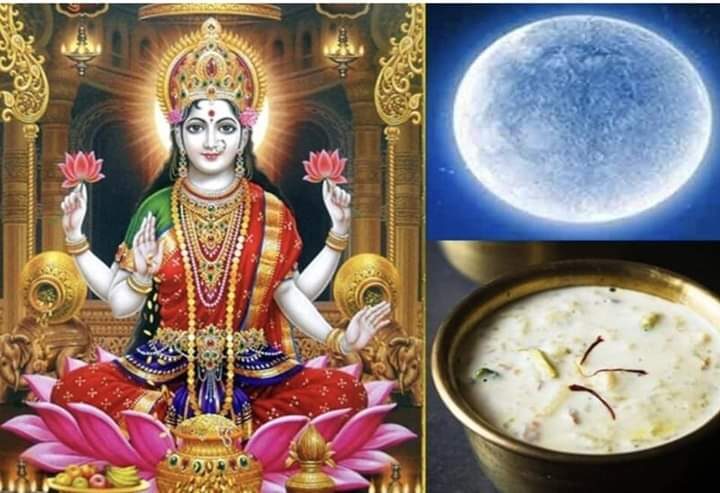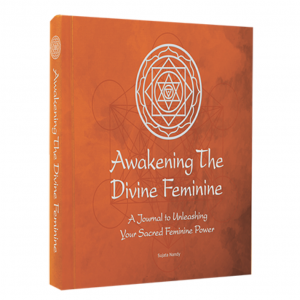19TH – 20TH OCTOBER 2021
Sharad Purnima is one of the most important Purnimas (Full Moons), in the Hindu Calendar. The Purnima tithi begins at 7.50 pm on October 19th and ends at 10.56 pm (Malaysian timing), on October 20th 2021.
Sharad Purnima, also known as Kojagari Puja, is a harvest festival, also dedicated to Goddess Lakshmi, which is celebrated on the Full Moon Day of the Hindu lunar month of Ashvin.
As per Hindu mythology, it is believed that the Maha-Raas (form of dance) of Radha Krishna along with their gopis takes place on the night of Sharad Purnima, which is why Sharad Purnima Puja is also known as Raas Purnima.
It is believed that Sharad Purnima is the only day in the whole year when the Moon is in its full shape and full of its sixteen Kala. According to Hindu mythology, the rays of the Moon have certain healing properties which nourish the human body and the soul: so, during this Full Moon, cleansing meditation practise is vital to restoring the body to its optimum state.
Devotees worship Lord Chandra (theMoon God), on this day for purification of their souls and bodies. Meanwhile, Goddess Lakshmi and Lord Shiva are also worshipped in several parts of India on this day.
It is also a popular belief that fasting on the day of Sharad purnima blesses one with great wealth, luck, love life and robust health.
RITUALS OF SHARAD PURNIMA
The Kojagari Lakshmi Puja is generally performed by women. The rituals start early in the morning and continue till late night.
Performing the Rituals:
~ Purify your altar by sprinkling holy Ganges water on it or water purified by your intent.
~ Place a picture of Lord Vishnu alongside Mahalakshmi and place a red cloth around the statue/image.
~ Light a ghee lamp and apply a tilak of kumkum to Lord Vishnu and Goddess Mahalakshmi. Offer a lotus leaf wreath to Goddess Lakshmi. In the event that you wish, you can offer a festoon of red roses.
~ Offer 8 pink lotus flowers to Goddess Lakshmi as a represent of the Astha (Eight) Lakshmi.
~ Offer a garland of yellow flowers to Lord Vishnu and salute the eight types of Mahalakshmi – Dhan Lakshmi, Vijay Lakshmi, descendants Lakshmi, Aishwarya Lakshmi, Aadhi Lakshmi, Gaja Lakshmi, Veer Lakshmi, and Dhanya Lakshmi.
~ Then, place kheer (milk boiled with brown sugar, pistachios and raisins till it becomes thickened and served with sprinkling of crushed pistachios) in four dishes.
It is said that eating kheer kept in the twilight is beneficial for everyone. It is believed that by reciting the mantras of Mahalakshmi the evening of Sharad Purnima, an abundance of wealth is obtained in the house.
The doorways of the houses are decorated with a special kind of Rangoli known as Alpana. This Alpana is prepared with rice flour and made into beautiful and articulate designs. The feet of Goddess Lakshmi is also made with the rice flour at the entrance making Her way into our homes – Her pathway is fashioned such that She appears to have walked everywhere where we wish Her to bless, like our kitchens, our living rooms, the North-East quadrants of our homes and our altars – Her feet are fashioned as coming inwards, NOT outwards.
CHANTING LAKSHMI MANTRA
Ganesha Dhyanam
Vakratunda Mahakaya,
Suryakoti Samaprabha,
Nirvighnam Kurume Deva,
Sarve Karyeshu Sarvada.
Suklam Baradaram Vishnum,
Shashi Varnam Chaturbhujam,
Prasanna Vadanan Dhyayet,
Sarva Vignubha Shantayet.
Lakshmi Beej Mantra
Om Hreem Shreem Lakshmibhayo Namah॥ 108x
Mahalakshmi Mantra
Om Shreem Hreem Shreem Kamale Kamalalaye Praseed Praseed
Om Shreem Hreem Shreem Mahalakshmaye Namah॥ 21x
Lakshmi Gayatri Mantra
Om Shree Mahalakshmyai Cha Vidmahe Vishnu Patnyai Cha Dheemahi,
Tanno Lakshmi Prachodayat Om॥ 9x
PUSHPANJALI
Pushpanjali mantra is chanted at the conclusion of pujas. Though there are pushpanjali mantras that are dedicated to particular deities, most pushpanjali mantras are suitable for all deities and you can use them generally to conclude the puja procedures of any kind of vrat (fasts) or puja. These mantras are chanted at the end of pujas after performing aarti and concluding all the other procedures. Thus, Pushpanjali mantras mark the grand conclusion of any ceremony.
While chanting pushpanjali mantra, the devotees must be standing while holding flowers in their cupped and closed palms. Once the chanting is over, offer the flowers at the altar at the feet of the deity.
There are generally four hymns popularly used as pushpanjali mantras. These four are chanted in the same sequence at the end of the pujas.
Hold red roses in your hands and chant:
Hymn – 1 – Pushpanjali Mantra
om yajñena yajñamayajanta devāh
Stāni dharmāṇi prathamānyāsan
Te ha nākam mahimānaḥ sachante
Yatra pūrve sādhyāḥ santi devāḥ
It is by means of performing sacrifices that the gods have accomplished their sacrifices. These sacrifices were the earliest of the observances. When these exalted ones attained the heavens, they found there the older gods who ascended to the heavens earlier the same way by performing sacrifices. Though typically applied to fire sacrifices or Yajnas, the essence of this mantra says only through sacred deeds like puja and vrat people can attain the best in this world and the best in the other worlds.
Hymn – 2 – Pushpanjali Mantra
Om rājādhirājāya prasahyasāhine namovayam vaiśravaṇāya kurmahe
Sa me kāmānkāmakāmāya mahyam kāmeśvaro vaiśravaṇo dadātu
Kuberāya vaiśravaṇāya mahārājāya namaḥ
We bow to the Lord who can be addressed with different names as Rājādhirāja Prasahyasāhī and Vaiśravaṇa (these are some vedic names for gods). May the supreme one namely he, Kāmeshvara Vaiśravaṇa, bless me so that I get all my desires fulfilled. I bow down to Mahārāja, the most powerful and venerable one who is also called as Vaiśravaṇa Kubera.
Hymn – 3 – Pushpanjali Mantra
Om svasti sāmrājyam bhaujyam svārājyam vairājyam pārameṣṭhyam rājyam Māhārājyamādhipatyamayam samantaparyāyī syātsārvabhaumaḥ sārvāyuṣa Antādāparārdhātpṛthivyai- samudraparyantāyā ekarāḷiti
This mantra is typically chanted during the coronation of kings wishing them all good success and also reminding them that they have to abide by dharma or righteousness in all their dealings and performance so that they remain meritorious. The hymn lists out the various wonderful achievements like sovereignty, independence, eminence, success, ruler of the worlds and a long life of health and happiness.
Hymn – 4 – Pushpanjali Mantra
Tadapyeṣa śloko ‘bhigīto marutaḥ pariveṣṭāro maruttasyāvasan gṛhe
Avikśitasya kāmaprerviśve devāḥ sabhāsada iti
The gods described as Maruts are witness to the concluding ceremonies of the events where distribution of the benefits of the event is done to all concerned.
Happy Sharad Purnima – may you receive the blessings of the Devi and be flourished with abundance.
Jai Maa!
Image credit: Pinterest
SUJATA NANDY WORLD GURUKUL
www.sujatanandy.com








